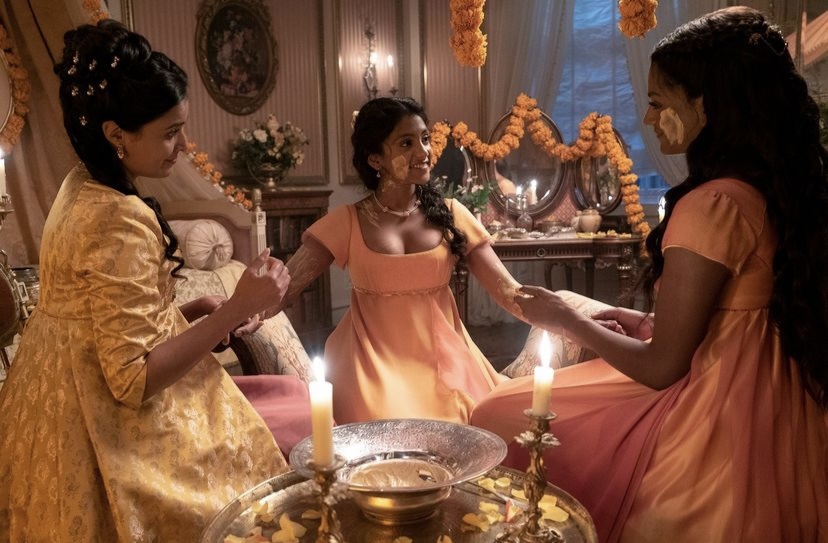Bridgerton’s second season hits the mark on Indian inclusion
Photo courtesy of Instagram @townandcountrymag
Haldi Ceremony scene from season two
Netflix’s Bridgerton found instant success last January. Boasting a “color blind” casting process, the show’s first season featured countless actors of color, a fact noticeably absent from other successful period dramas.
With the second season, released on March 25, “the ton was abuzz” once again following the news that British Indian actresses Simone Ashley and Charithra Chandran would be starring as lead heroines, Kate and Edwina Sharma, respectively.
From the fabric choices and jewelry that adorned the lovely Sharma sisters to the countless references picked up on by Indian audiences, season two brought some much needed Indian culture back to its British Regency stage.
At various moments throughout the season, the series highlighted typical traditions of cultural significance. Kate’s humorous digs and general contempt for British tea led to an intricate scene of her making true Indian chai, a moment of pride for its Indian audience, and an educational one for its Western viewers. Especially when considering England’s long and pain- ful history with India, representation of Indian traditions is essential.
Kate’s relationship with Edwina also paves the way for plenty of scenes highlighting the dynamics of an Indian family. From the very first episode introducing the Sharma sisters, Edwina refers to Kate as “Didi,” the common Indian word for “elder sister.” Being a Didi myself, this detail was touch- ing, and its consistent use throughout the season enhanced the sisterly bond in many scenes. In another episode, Kate is seen oiling Edwina’s hair before bedtime, another classic tradition in many parts of Southern Asia. Once again, Bridgerton displayed the beauty of Indian culture to be enjoyed by all of its viewers, Indian and otherwise.
The second season’s trailer also teased a long-awaited Haldi ceremony. The Haldi ceremony is a widely known tradition that precedes most Indian weddings where turmeric paste is applied to the bride’s skin for beauty. Indian fans were thrilled to receive an intimate Haldi ceremony between the Sharma family to a heartfelt classical rendition of a famous Indian love song, “Khabi Khushi Khabi Gham.” Without this scene, to Indian viewers, all the other romances and frills would have fallen flat. The inclusion of long-held traditions was crucial to the season’s success in highlighting Indian culture.
While Bridgerton pulled out all the stops at its inclusion of Indian culture in season two, naturally, there were a few discrepancies. The ethnicity of the family sometimes wavered, specifically considering the northern origin of the name “Sharma” not aligning with the language the Sharmas speak, Marathi, which comes from a different state in India. Additionally, Kate affectionately calls Edwina “bon,” which means “sister” in Bengali, a complete other Indian language altogether.
However, these details didn’t outweigh how important this season was. Bridgerton has achieved great success with its American audience, and it’s not often that Western cinema and media takes such great care to include Indian culture in a show that isn’t pitched to an Indian audience. Season two has raised the bar, both for future Bridgerton seasons and all other shows after.

